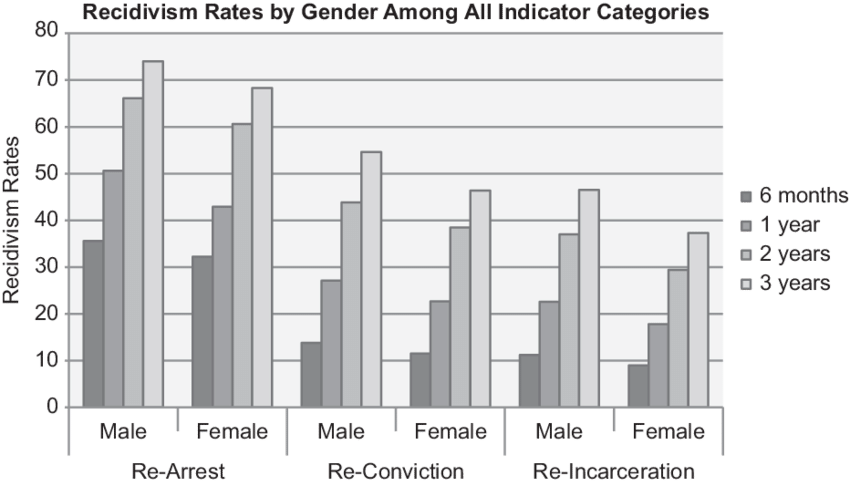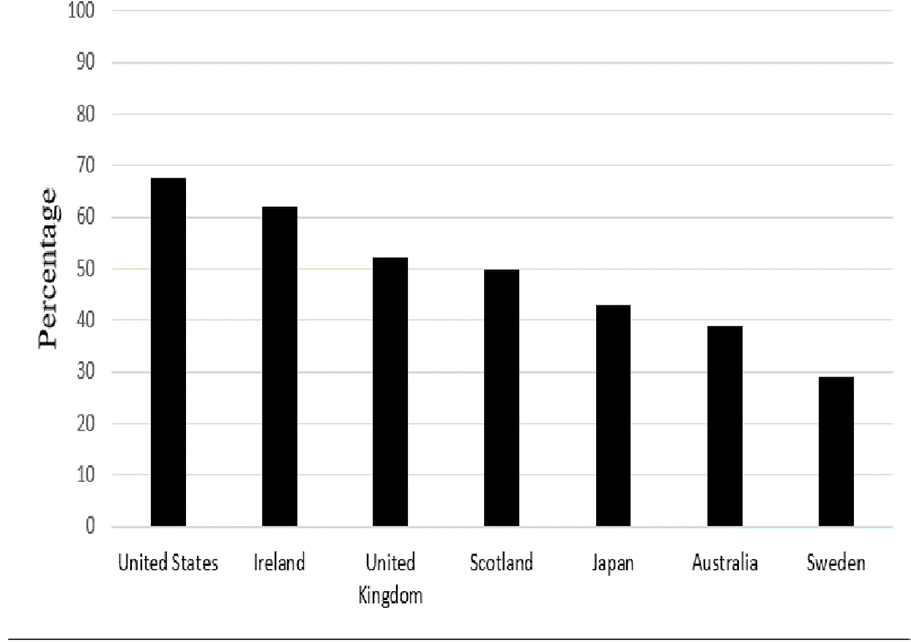Introduction
For centuries, crime has been a global concern in many nations. Offenders convicted of small and major crimes are tried and prosecuted. The corrections department is vital for national growth and development because it focuses on rehabilitating ex-convicts to become useful members of society. Although a significant percentage of individuals reform completely, some are arrested again (Katsiyannis et al., 2017). Notably, recidivism has raised national interest owing to the input of resources to the corrections institutes in the U.S.
Definition of Recidivism
Earlier studies on recidivism have attempted to unveil the causes and their implications. Although they are all directed to the same goal, they differ by their approach to recidivism. According to Benecchi (2022), part of criminal justice analysis is based on the definition of recidivism which spans re-imprisonment, re-conviction, and re-arrest. In all cases, it revolves around the probability of an ex-offender repeating the same criminal behavior or committing a different offense after being released. The U.S. has established the national institute of justice through which it monitors.
Interconnection with Criminal Justice Concepts
Recidivism is closely connected to other criminal justice concepts that determine the effectiveness of the correctional systems. Incapacitation involves removing offenders from the community to prevent them from committing further crimes (Katsiyannis et al., 2017). In relation to sanctions, specific deterrence evaluates where a specific sanction was influential in a way to prevent further offenses. Rehabilitation involves helping individuals by assisting and supporting their change process. Lastly, desistance is the state of permanent non-offending behavior reached after correction.
Causes
Many people fail to reform even after serving a prison sentence due to several personal and social conditions. One of the main reasons behind the relapse is the lack of meaningful employment. In some cases, ex-convicts are regarded as criminals who are avoided by community members (Butorac et al., 2017). Failed relationships and lack of social support are significant contributors to recidivism. In some cases, when individuals go back to society, they may associate themselves with criminal gangs and easily fall back to their former ways.
Prevention
The main goal of correctional systems is to ensure that ex-convicts reach the state of desistance as soon as possible after regaining their freedom. However, Benecchi (2022) records that over fifty percent of incarcerated individuals are arrested again within three years after release from prison. This rate can be reduced through combined efforts between the community and the government. If ex-convicts are offered meaningful employment and community support, they would be less likely to relapse.
Current Statistics
As recidivism rates increase globally, the U.S has recorded some of the highest rates. According to Clarke (2019), 44% of all released prisoners are incarcerated within the first year following their release. This may be due to failed corrections or an individual’s resistance to reforms. 68% of ex-convicts are re-arrested in three years while 77% recidivate within five years (Clarke, 2019). The type of crime affects recidivism, with non-violent offenders showing higher rates of relapse.
Graphical Representation

According to the graph presented above, recidivism rates increase from six months to six years after release from correctional facilities. Notably, male offenders are more likely to relapse than female convicts. Recidivism can be categorized into re-arrest, re-conviction, and re-imprisonment (Clarke, 2019). Among the three classes, ex-convicts are more likely to be re-arrested than the other two categories. This implies that some of the arrested individuals may not be found guilty of the crimes for which they are accused. The data above is shown for first-time offenders and can be used to evaluate the connection between gender, time, and crime. The individual response to sanctions and correction processes is higher for women than men. However, it can be argued that ex-convicts may be received differently in the community based on their gender, accounting for the differences noted.
Global Comparison Of Recidivism Rates

Comparing the data presented in the graph, it appears that the U.S. has the highest recidivism rates globally. Although different nations have their policies regarding correctional systems, a comparative analysis can be used re-evaluate some programs. As shown in the graph above, Sweden has the lowest recidivism rates, implying that it has effective correctional programs (Hedstrom, 2018). From this data, the U.S. criminal justice department can benchmark on Sweden to learn the best policies to limit recidivism.
Barriers To Successful Reentry
Due to the negative attitudes associated with criminal activities in society, it is challenging for ex-convicts to re-enter the community after release from correctional facilities. First, they may find it difficult to make friends (Butorac et al., 2017). Second, employers may be unwilling to hire people with criminal records, leaving them without a source of income. Third, affordable housing may be denied and, lastly, they may be barred from community support. These challenges are so significant that ex-convicts may associate with criminal gangs and end up in prison.
Conclusion
Recidivism has been linked to jail performance, and it has been used to investigate the differences in efficacy between publicly and privately run prisons. Criminal activities that resulted in rearrest, return to prison or reconviction with or without a fresh term within a three-year period following an individual’s release are used to calculate recidivism. Recidivism rates in the United States have risen in the recent decade. The United States has the highest incarceration and recidivism rates in the world.
References
Benecchi, L. (2022). Recidivism imprisons American progress.Harvard Political Review. Web.
Butorac, K., Gracin, D., & Stanić, N. (2017). The challenges in reducing criminal recidivism.MRU Institutional Repository. Web.
Clarke, M. (2019). Long-term recidivism studies show high arrest rates.Prison Legal News. Web.
Hedstrom, J. (2018). The American and Swedish criminal justice system: A comparative study. Web.
Katsiyannis, A., Whitford, D., Zhang, D., & Gage, N. (2017). Adult recidivism in United States: A meta-analysis 1994–2015. Journal of Child And Family Studies, 27(3), 686-696. Web.